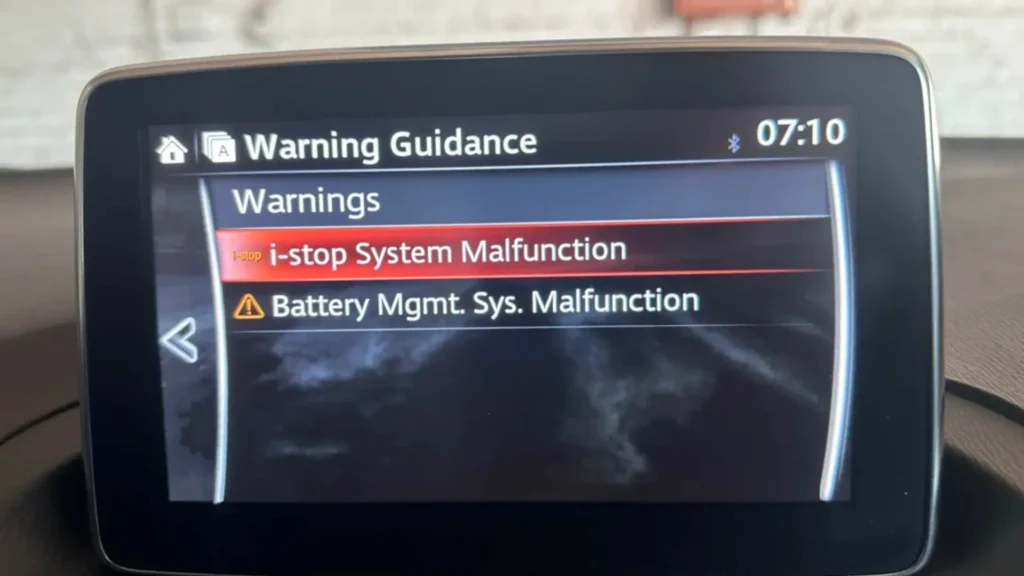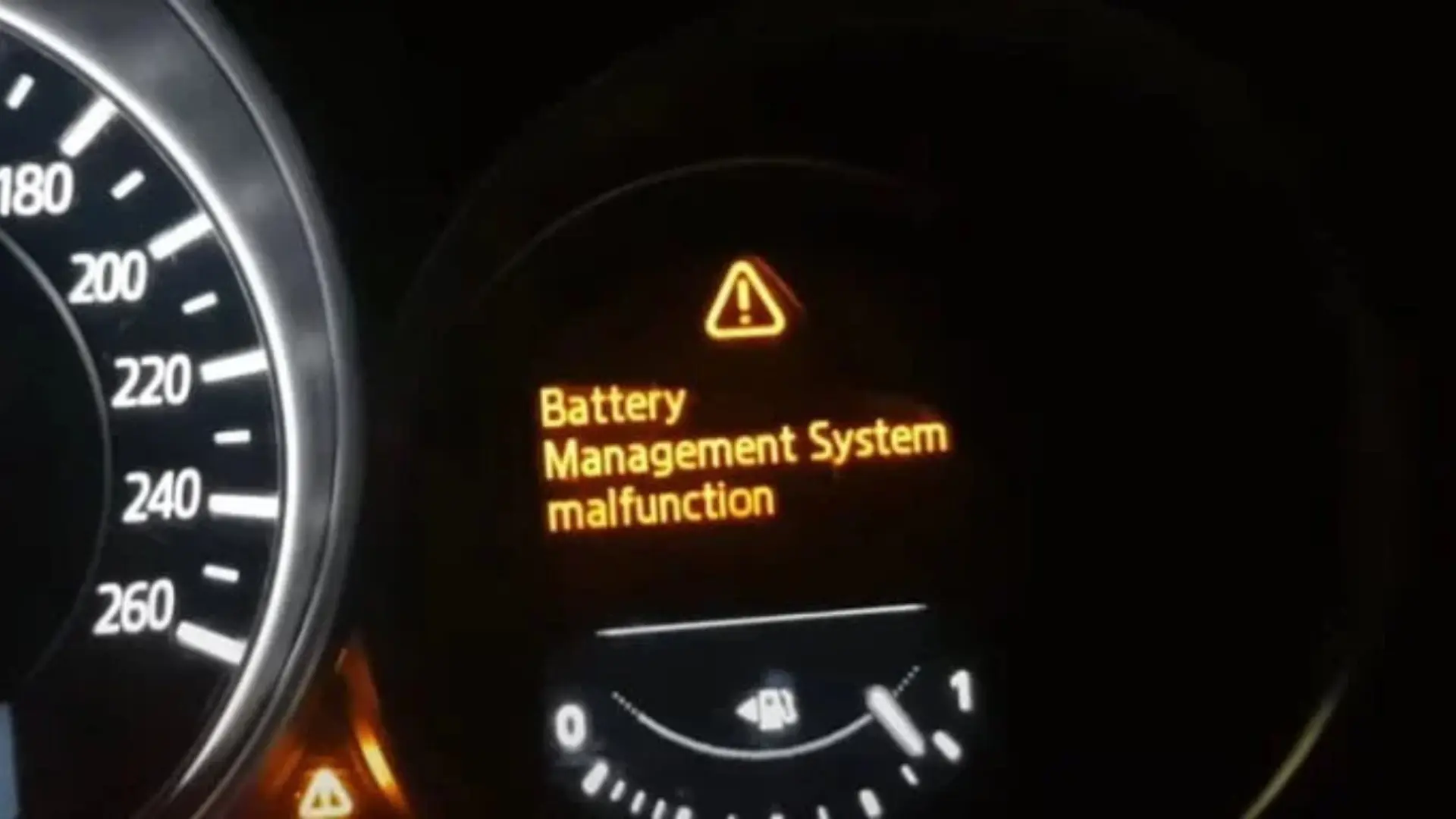Mazda Battery Management System Malfunction: Causes & Fixes
If you’ve ever found yourself stranded on the side of the road with a dead battery, you know how frustrating it can be. But for Mazda owners, there’s an added layer of complexity—enter the Battery Management System (BMS).
This sophisticated technology is designed to optimize your vehicle’s electrical performance, but when it malfunctions, it can lead to unexpected challenges that leave many drivers scratching their heads.
In this blog post, we’ll demystify Mazda Battery Management System Malfunctions by diving into their causes and offering practical solutions. Whether you’re experiencing mysterious warning lights or puzzling power drain, we’ve got you covered!
Introduction to the Mazda Battery Management System (BMS)
When it comes to the performance and longevity of your Mazda, understanding the intricacies of its Battery Management System (BMS) is crucial. This often-overlooked component plays a vital role in ensuring that your vehicle’s battery operates efficiently and safely. However, like any sophisticated system, the BMS can encounter malfunctions that could lead to frustrating issues down the road.
Picture this: you’re gearing up for an essential trip when your car refuses to start due to a hidden glitch in its BMS. It’s not just inconvenient; it’s also a sign that something might be off under the hood.
By delving into what makes up the Mazda Battery Management System and exploring common problems associated with it, you can stay one step ahead of potential headaches. Let’s explore how you can identify these malfunctions early on and take proactive steps towards solutions that keep your Mazda running smoothly!
What is a BMS and its Importance in Mazda Vehicles?
The Battery Management System (BMS) is a crucial component in Mazda vehicles. It plays a vital role in monitoring and managing the vehicle’s battery performance.
A BMS ensures that your car’s battery operates efficiently. It regulates charging and discharging, preventing overcharging or undercharging. This balance extends the lifespan of your battery, promoting optimal energy use.
Additionally, the BMS monitors individual cells within the battery pack. By keeping an eye on voltage levels and temperatures, it detects potential issues before they escalate into significant problems.
For drivers, this means peace of mind knowing their vehicle’s electrical system is safeguarded against failures. A well-functioning BMS contributes to better fuel efficiency and overall performance.
In essence, a robust Battery Management System not only enhances reliability but also improves driving experience in every Mazda model equipped with one.
Common Symptoms of BMS Malfunctions
When the Mazda Battery Management System starts to malfunction, drivers may notice several telltale signs. One of the most common symptoms is a sudden decrease in battery performance. You might find your vehicle struggling to start or experiencing unusual electrical issues.
Another indicator is frequent warning lights on the dashboard. These alerts can signal problems related to battery charge levels or overall system health.
Additionally, irregular charging patterns are often observed. If you notice that your car’s battery seems to charge too quickly or not at all, it could point to BMS issues.
Lastly, physical signs like corrosion around terminals should never be ignored. This damage can disrupt connections and exacerbate any existing problems with the management system. Paying attention to these symptoms early can help prevent more severe complications down the road.
Causes of Mazda Battery Management System Malfunction
The causes of a Mazda battery management system malfunction vary and can be quite complex. One common issue is overcharging or undercharging the battery. This imbalance can lead to decreased battery efficiency and potential damage.
Faulty sensors or components also play a significant role in BMS failures. When these parts don’t work correctly, they fail to provide accurate readings, causing erratic behavior in the vehicle’s electrical systems.
Corrosion or physical damage to wiring poses another critical risk. Corroded connections disrupt communication between the battery and BMS, leading to performance issues that may go unnoticed at first.
Understanding these causes helps in diagnosing problems early on, ensuring your Mazda runs smoothly without unexpected interruptions from its power source. Each factor contributes uniquely to how well your vehicle performs day-to-day.
Overcharging or Undercharging
Overcharging and undercharging are two critical issues that can severely impact the Mazda Battery Management System. Overcharging occurs when the battery receives too much voltage, leading to excessive heat generation. This not only reduces battery lifespan but can also cause swelling or leakage.
On the other hand, undercharging leaves the battery with insufficient power for optimal performance. A consistent lack of charge may result in diminished acceleration and overall vehicle efficiency.
Both conditions often stem from faulty charging systems or improper maintenance practices. It’s essential to monitor your vehicle’s voltage levels regularly to prevent these issues from escalating.
When faced with symptoms related to charging inconsistencies, prompt attention is necessary. Ignoring these signs could lead to more significant problems down the road, affecting both safety and reliability on the road. Proper diagnostics will help pinpoint whether overcharging or undercharging is at play within your BMS.
Faulty Sensors or Components

Faulty sensors or components can significantly impact the performance of your Mazda’s battery management system. These parts are crucial for monitoring and regulating battery health, ensuring optimal function.
When sensors malfunction, they may provide inaccurate readings. This could lead to improper charging cycles or failure to detect battery issues in a timely manner. If you notice unusual behavior from your vehicle—such as warning lights on the dashboard—it might be time to investigate further.
Components such as relays, fuses, and connectors also play key roles in the system’s efficiency. A damaged connector could interrupt communication between vital parts, creating chaos within the BMS.
Regular checks of these components can help prevent larger problems down the line. Keeping an eye on their condition is essential for maintaining a healthy battery management system in your Mazda.
Corrosion or Damage to Wiring
Corrosion or damage to wiring can lead to serious issues within the Mazda Battery Management System. Over time, exposure to moisture and environmental factors can cause wires to corrode. This degradation affects the electrical connections necessary for optimal BMS performance.
When insulation wears away, it may also expose wires to short circuits. Such a scenario disrupts communication between the battery and system components. It can ultimately result in inaccurate readings or complete system failure.
Routine inspections of wiring are essential for early detection. Look out for any signs of wear, such as frayed edges or discoloration. Addressing these issues promptly prevents more significant problems down the road.
Keep your vehicle’s battery health in check by ensuring its wiring remains intact and functional. A well-maintained electrical system contributes significantly to overall vehicle reliability.
How to Diagnose a BMS Malfunction?
Diagnosing a Mazda battery management system malfunction requires careful observation and the right tools. Start by using diagnostic equipment to read error codes from your vehicle’s onboard computer. These codes often point directly to issues within the BMS.
Next, visually inspect the battery and surrounding components. Look for any visible signs of damage or corrosion on wiring connections. A well-maintained connection is crucial for efficient operation.
Pay attention to how your car behaves during regular use. Unusual performance, like sudden power drops or warning lights, can indicate underlying problems with the BMS.
If you have access to specialized software or apps designed for Mazda vehicles, utilize them for a deeper insight into potential malfunctions. They can provide real-time data on battery health and performance metrics that standard diagnostics may miss.
Using Diagnostic Tools and Codes
Diagnosing a Mazda battery management system (BMS) malfunction often begins with the right tools. Advanced diagnostic equipment can interface directly with your vehicle’s onboard computer.
These tools read error codes that pinpoint specific issues within the BMS. Codes such as P0A80 or P1A10 indicate problems related to battery performance and charging, giving you a clear direction for troubleshooting.
Additionally, many modern scanners provide real-time data streams. This allows you to monitor voltage levels and current flow while the car is operational. Spotting irregularities during active use can help isolate intermittent faults.
Using these diagnostic methods not only saves time but also aids in identifying hidden problems that might otherwise go unnoticed. Ensuring accuracy is vital; investing in high-quality diagnostic equipment pays off when dealing with complex automotive systems like the BMS.
Check for Physical Damage or Corrosion
When diagnosing a Mazda battery management system malfunction, inspecting for physical damage or corrosion is essential. Corrosion can develop on terminals and connectors over time. This buildup hinders electrical flow and may lead to performance issues.
Start by visually examining the battery connections. Look for any signs of rust or greenish deposits around terminals. If you spot corrosion, it’s vital to clean it off carefully using a mixture of baking soda and water.
Next, check the wiring connecting the BMS components. Frayed wires or damaged insulation can disrupt communication between parts of the system. Ensure there are no visible cracks or breaks in these wires.
Don’t forget to inspect mounting points as well; loose batteries can shift during driving, leading to potential damage over time. A thorough physical examination helps pinpoint problems before they escalate into more severe malfunctions.
Solutions to Fix Mazda Battery Management System Malfunctions
If you’re facing a Mazda battery management system malfunction, several solutions can help restore functionality. One common approach is resetting the system. This process clears any temporary errors that may be causing issues and allows the BMS to recalibrate itself.
Should resetting not resolve the problem, consider replacing faulty components. Sensors or wiring within the BMS might be damaged or malfunctioning. Identifying these parts can save time and ensure your vehicle operates smoothly.
Regular maintenance and inspection play a critical role too. Keeping an eye on connections, cleaning terminals, and ensuring there’s no corrosion can prevent future problems from arising.
Always consult with a professional technician if you’re unsure about performing repairs yourself, as proper diagnostics are essential for effective troubleshooting in complex systems like the BMS.
Resetting the System
Resetting the Mazda Battery Management System can often resolve minor glitches. This process helps to recalibrate the system, allowing it to function optimally.

To reset, start by disconnecting the battery cables. Remove both positive and negative terminals for about 10 minutes. This brief disconnection gives the system a chance to clear any temporary errors. After waiting, reconnect the battery terminals securely. Ensure they’re tightened appropriately to avoid future issues.
Once reconnected, turn on your vehicle and let it idle for several minutes. This allows the BMS to readjust itself with fresh parameters based on current conditions.
Watch closely for warning lights or unusual behavior after resetting. If problems persist, further diagnostics may be necessary before considering more extensive repairs or component replacements.
Replacing Faulty Components
When dealing with a Mazda BMS malfunction, replacing faulty components is often necessary. Identifying which parts are defective can greatly improve your vehicle’s performance.
Start by examining the battery itself. If it’s old or damaged, it may not hold a charge properly. Replacing it can restore functionality and efficiency.
Next, check the BMS sensors. These small devices monitor voltage levels and temperature fluctuations. A malfunctioning sensor may send incorrect readings to the system, leading to erratic behavior.
Don’t forget about wiring connections too. Corroded or frayed wires can interrupt communication between components. Replacing these could enhance overall reliability.
Always use quality replacement parts to ensure compatibility with your Mazda model. Opting for OEM (Original Equipment Manufacturer) components often guarantees better longevity and performance compared to generic alternatives.
Regular Maintenance and Inspection
Regular maintenance is key to a healthy Mazda Battery Management System. By keeping up with your vehicle’s service schedule, you can identify potential issues before they escalate.
During inspections, pay close attention to the battery terminals and connections. Clean any corrosion that may build up over time. This small step can significantly enhance performance.
It’s also wise to check the wiring for signs of wear or damage. Frayed wires could lead to system malfunctions down the line.
Another crucial aspect is software updates. Manufacturers often release updates that improve efficiency and fix known bugs in the BMS.
Don’t overlook routine checks on sensors as well; these components play a vital role in monitoring battery health. Regularly ensuring they’re functioning properly helps maintain optimal operation of your vehicle’s electrical systems.
Tips for Maintaining a Healthy BMS
Maintaining a healthy Mazda Battery Management System is crucial for optimal vehicle performance. Regular inspections can catch early signs of wear or damage, helping to avoid larger issues down the line. Keep an eye on battery terminals and wiring connections. Clean any corrosion you notice right away to ensure efficient electrical flow.
Consider checking the BMS software updates as well. Manufacturers often release updates that improve system efficiency or fix known bugs. If your driving habits involve frequent short trips, consider taking longer drives occasionally to fully recharge the battery’s capacity.
Lastly, monitor your battery’s health using diagnostic tools available at most automotive shops. This proactive approach can help maintain a robust BMS and extend your vehicle’s lifespan significantly.
Related Article:
GMC Terrain Years To Avoid
Preventing Future BMS Malfunctions
Preventing future BMS malfunctions is essential for the longevity and reliability of your Mazda vehicle. Regular maintenance plays a pivotal role in keeping your battery management system functioning smoothly. Start with routine inspections, paying close attention to battery connections and wiring integrity. Look for signs of wear or corrosion that could lead to bigger problems down the line.
Maintaining optimal charging practices can also mitigate issues. Overcharging or undercharging batteries frequently leads to malfunctions, so ensure you use appropriate chargers designed for your specific model. Additionally, investing in quality components when replacements are necessary helps maintain overall system health.
Educating yourself on how the BMS works can empower you as a vehicle owner. Familiarize yourself with warning signs that may indicate a problem before they escalate into major repairs. By staying proactive about monitoring your Mazda’s Battery Management System, you’ll not only enhance performance but also extend the life of your vehicle.
Embracing these preventive measures will help keep your Mazda running at its best while minimizing unexpected breakdowns related to BMS failures.
Conclusion
The Mazda Battery Management System is vital to ensuring reliable performance and long battery life, but like any advanced technology, it can develop issues over time. By recognizing the common symptoms, understanding their causes, and following proper maintenance practices, you can prevent small problems from turning into costly repairs.
Staying proactive with inspections, software updates, and timely fixes will not only protect your BMS but also keep your Mazda running smoothly for years to come.

Kevin Morgan is an ASE-certified automotive engineer and blogger with over 15 years of experience in vehicle systems design, performance testing, mechanics, and diagnostics. He is deeply passionate about automotive excellence. As a contributing author at CarClinicCentral, Kevin shares his expertise with enthusiasts, providing valuable market insights, updates, and trends.



![Mercedes A5 Service: Cost & Checklist [Detailed Guide] 2025 6 mercedes a5 service](https://carcliniccentral.com/wp-content/uploads/2025/08/mercedes-a5-service-768x432.webp)
![Power Steering Assist Fault: Signs, Causes, and Fixes [2025] 7 power steering assist fault](https://carcliniccentral.com/wp-content/uploads/2025/09/power-steering-assist-fault-768x432.webp)
![Mitsubishi ASX Problems & Issues: Causes and Fixes [2025] 8 mitsubishi asx problems](https://carcliniccentral.com/wp-content/uploads/2025/09/mitsubishi-asx-problems-768x432.webp)
![Chevy 8 Lug Bolt Pattern: Everything You Need To Know [2025] 9 chevy 8 lug bolt pattern](https://carcliniccentral.com/wp-content/uploads/2025/09/chevy-8-lug-bolt-pattern-768x432.webp)
![7EA Engine Code: Causes, Diagnosis, and Solutions [2025] 10 7ea engine code](https://carcliniccentral.com/wp-content/uploads/2025/09/7ea-engine-code-768x432.webp)